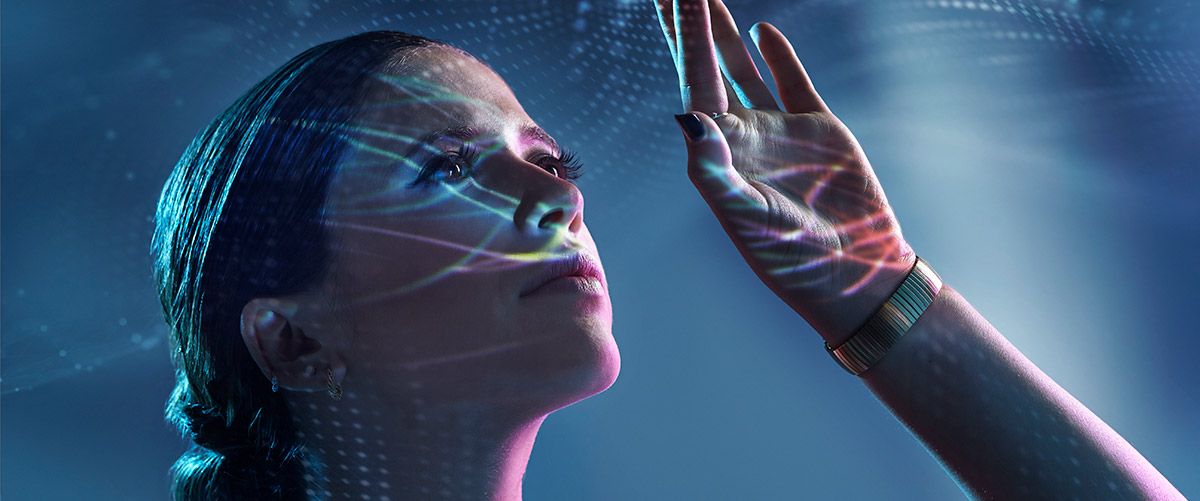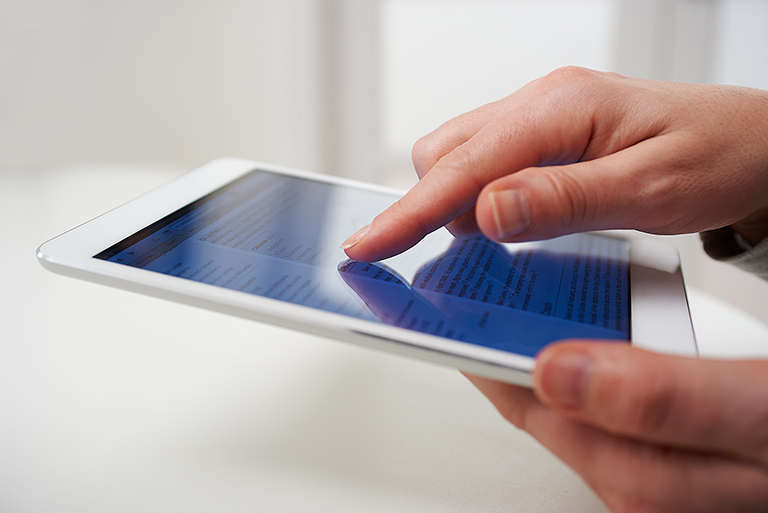Executive Summary
Consumer attention is the most valuable — and fickle — resource that brands can claim. And yet, in their efforts to capture and hold attention, service providers have overlooked some massive tools in their arsenal: bills and statements. These communications have scarcely changed over the decades, and brands should embrace the opportunity, applying digital innovation and design thinking to make these documents centerpieces of their engagement and retention strategies. No longer mere transactional records, bills and statements would be freed to be the vital communications tools they are.
The average human attention span is roughly eight seconds — about that of a goldfish.1 And yet if humans want to focus on something for longer, they will. Case in point, 97% of people will devote two to five minutes to reading their bills and statements every month.2 For all the ways businesses try to deliver value to customers and shareholders, this overlooked document may be the key to unlocking untapped value.
A two-to-five-minute window with your customer is a gift — and not one to squander. This is a Super Bowl commercial break. Advertisers would pay millions for this kind of exposure, but billing brands face a major obstacle: As soon as consumers finish with these communications, they want nothing more than to forget them.3 Even customers who manage finances online are frustrated, as passwords and multi-stage authentication feel more like obstacles than assets.4
These attitudes are not unwarranted. Forty-five percent of indebted people in the U.S. funnel as much as 50% of their income toward debt repayment.5 Yet regardless of people’s finances, these communications have barely evolved. Be it a telephone bill from 1899 or a brokerage statement from 2017, the user experience remains static, transactional and often quite dull.
What if brands viewed bills and statements as a regular monthly meeting — a vital marker in the customer journey?
Instead, what if brands viewed bills and statements as a regular monthly meeting — a vital marker in the customer journey? What if these communications not just summarized services rendered or payments outstanding but added genuine, appreciable value to the customer experience? Bills and statements would become a brand’s most potent tools for engagement and retention.
For this to happen, though, customer communications must be reimagined. Remarkable technologies and fresh design principles are ready to be deployed at scale — both online and on paper — that can dramatically increase consumer loyalty, decrease delinquency and position a brand right where the customer wants them, when they’re most likely to engage.
These communications are big, important parts of the customer journey, but brands aren’t treating them as such.
THE OPPORTUNITY
Broadridge reaches 80% of North American households, sending 5 billion communications every year. It services more than 5,000 brands, and processes $5 trillion in fixed-income and equity trades on any given day in North America. We know that major service providers might send two or three email communications per week to a customer, only to experience click-through rates of 1% to 2%.6 Why would otherwise thoughtful, well-organized, efficiency-minded companies accept these results? Because bills and statements are not considered a greenfield opportunity for innovation.
“These communications are big, important parts of the customer journey, but brands aren’t treating them as such,” says Rob Krugman, Chief Digital Officer for Broadridge. “Companies think a lot about what they need to include on a bill or statement. They don’t think of how these communications could also be part of a marketing strategy.”
This is largely, and lamentably, by design. “In transactional businesses, customers have tended to only talk to brands when there is a problem,” says Cliff Kuang, a leading expert in user experience design. The implication is that absent a telephone call to a customer service agent or a session with a chatbot, people rarely engage with the brands that serve them — and when they do, it’s because something went wrong.
Organizations’ hearts are in the right place; 43% of companies say that their primary goal in the coming business year is to improve the customer experience.7 They should recognize, then, that an opportunity to reimagine financial communications is an invitation to reimagine the entire consumer-client relationship.
THE CHALLENGE
Incremental tweaks would only bring incremental innovations, and Broadridge wanted to spur a transformation — to effectively break the bill — so that the transactional aspect of a bill would become the least of its functions. In conjunction with digital agency Huge, we set out to design an optimal communications experience for the year 2025 — not so remote that the documents would be beamed holographically from Mars, but not so near that creativity would be shackled.
The challenge — a hackathon-style design competition over six weeks — was taken up by three teams comprised of various skills sets, including UX and industrial designers, engineers, data scientists and engagement strategists.
With an extraordinary time constraint, teams had to research, ideate and prototype around a specific objective. “Reimagine communications” would be a daunting task for an entire industry, let alone three small interdisciplinary teams with just six weeks to work. Therein lies the approach’s value.
Through preliminary conversations with Broadridge stakeholders, each team came away with three core truths:
- Customer communications feel transactional.They should feel like a service.
- The most impactful communications are designed with the customer in mind.8
- The shift to digital is real, but paper is not going away soon.
Beyond this was blue sky. Six weeks later, the three final concepts were ready for their close-up. And what emerged was not just work that was future-facing, but work that contained innovative business principles. Suddenly the conversation was not just around improving a communication experience but around improving relationships.
IDEA 1
A.I. WILL MEDIATE THE CONSUMER’S FINANCIAL LIFE
Advances in artificial intelligence, or A.I., will open avenues to consumer engagement scarcely imaginable just a few years ago. Bills and statements will be tailored to suit the habits and preferences of the individual, with the potential to exist in real time, not just in a format that becomes outdated as soon as it is sent.
Watch the video to see how a digital "personal assistant" can help consumers with their finances in the future.
The first team proposed a humanized A.I. that harmonizes an individual’s myriad bills on a sheet of “smart” paper. This flexible material, which labs around the world are currently perfecting, would satisfy many consumers’ preferences for retaining paper records. Indeed, 29% of consumers use paper bills as a physical archive.9 While the satisfying form factor of a paper bill or statement is preserved, the platform stores past billing and financial information in the cloud to ease access (and to free up filing cabinets).
Through a series of push notifications and passive indicators like changing colors, the platform notifies the user when a billing date is approaching, or when an important communication might be inbound from a brand. It also reinforces positive behaviors like consistent on-time bill pay via a series of animations and rewards.
Additionally, this platform has infrared scanning abilities that would allow the user to manage household utility consumption simply by scanning over an appliance or device. At its heart, the A.I. creates context for its user to make better decisions about their financial lives.
Smart brands will leverage A.I. to deliver critical communications that suit the customer’s preferences.
IDEA 2
PHYSICAL BILLS WILL GROW SMARTER
Attempting to change consumer behavior is fraught with risk. To encourage online statement and bill delivery, a brand may be tempted to eliminate paper communications. However, old habits die hard, and most consumers may not be ready to give up paper.
This concept seamlessly blends the best of physical and digital. Watch the video to find out more.
Acknowledging this, the second team showcased a paper bill that greatly simplifies payments, but to call it a simplification may be unfair to what could become a revolutionary idea.
First, the envelope itself was redesigned to echo the billing brand’s telltale colors and other visual marks — not only for quick identification in a stack of mail, but to reinforce the brand’s visual identity to the consumer.
Next, a patterned copper strip was incorporated along a perforated edge on the enclosed bill. With a mobile device in proximity to the bill, the customer simply tears the bill along the perforation, triggering a payment from a linked checking account. Alternatively, a customer can place the bill in proximity to their mobile device and, after the connection is made and verified, simply click “Pay” on their device’s screen.
Breaking the copper wires only triggers payment for that particular bill. What’s more, if a customer is unsure as to why their payment amount increased from one month to the next, they can overlay the two bills to receive a comparative view of billable activity — whether for data usage, brokerage fees or other services. This provides a rich, immersive snapshot of the value derived from the service.
“In the 2020 to 2025 timeframe, people will have greater expectations about how things should work,” Krugman says. “Updating the physical mail artifact — emphasizing the linkage between the physical and digital pieces — makes this solution really impactful.”
Paper still has a lot of life left in it — presuming companies work to seamlessly meld the digital with the physical.
IDEA 3
BRANDS WILL DRAW STRENGTH FROM ONE ANOTHER
Service providers ultimately want two things:
- Timely customer actions and
- Fewer calls to their customer service centers.
Accomplishing both requires a delicate balance of proactive (i.e., approaching the customer) and passive (i.e., letting the customer approach) communications strategies. If a digital platform could act as an intermediary — not for one company, but for each that has a relationship with the consumer — brands could tailor their messaging more accurately and create more fluid relationships with their customers.
Watch this video to discover how a data-driven platform enhances the customer experience.
In essence, this is the solution proposed by the third team. Consumers already use third-party platforms like Google Drive to store bills and statements,10 so it’s not such a stretch to imagine an online platform becoming the hub for all of a consumer’s billing and banking activity.
Through an elegantly simple UI, the platform becomes a partner in the consumer’s financial well-being. As a storehouse for brand initiatives, it can push “work-it-off” incentives to a user — viewing a promotional video or completing a survey, for example — in order for the consumer to receive a discount on their bill. Given it aggregates all of a consumer’s billing and banking information, moving to a new home means their address can be automatically updated across their service providers. Or if the user has an upcoming trip to Tokyo, their telecom would know and could proactively offer a discounted international data plan.
And when a tax refund lands in the user’s checking account, the platform can surface brand messages that contain strategies for putting that windfall to work. Simple swipes and voice commands would convert recommendations into actions.
“It’s about the opportunity,” Krugman says. “It’s not that bills are bad or everybody hates them. They could be better. They could work harder. Companies have been trying to iterate and improve on a model, but you really need to upend the whole model.”
Brands are at their most valuable to consumers when they harmonize around their needs. And though the data-privacy tipping point is not here yet, its arrival will be hastened by enjoyable, well-designed digital products and experiences.
START THE JOURNEY
Broadridge Chief Digital Officer Rob Krugman outlines three steps that you can take today to get ready for the future.
1. Think beyond cost savings when developing digital KPIs.
In addition to measuring cost reductions — such as decreasing print/mail costs and call center volumes — consider establishing engagement KPIs, like revenue generated from bill and statement messaging, repeat visits and transactions, lifetime customer value, net promoter scores and customer retention.
2. Focus on the customer experience, not just driving digital adoption.
Most consumers are already digital; they just may not be digital with you. Identify the pain points or friction in your current communications process; for example, what is the process for converting from paper to digital? Once consumers go paperless, evaluate how easy it is to take action (e.g., pay a bill or ask a question). By evaluating the customer journey, you can improve the experience and, ultimately, increase digital adoption.
3. Consider the print-to-digital journey.
Print still plays an important role in our digital world. Consider that 64% of consumers use paper to remind themselves to review and/or pay their bills, statements and financial documents.11 Going digital doesn’t require a clean break from print; it’s about simplifying and converging print and digital, fusing the two experiences. By designing with a “digital first” mindset, like architecting choices and providing relevant offers based on data, brands can actually improve the print experience.
WHAT THE FUTURE LOOKS LIKE
These solutions were not conceived in some distant netherworld. They are, with very few exceptions, implementable today. The future is much nearer than some would ever think — and brands have the power to shape it.
“These solutions were designed from the perspective of the consumer, but they also were framed in terms of how they would benefit the brand,” says Krugman. “And the benefit would be real and measurable.”
All three solutions tap existing consumer behaviors; nobody is asked to contort themselves to fit an ill-wrought engagement or retention strategy. The companies that will win the future are the ones that meet their customers where they are, and give them solutions they didn’t even know they wanted.
Is this the future of customer communications?
No. It’s the future of business.
View the full list of references for this report.



